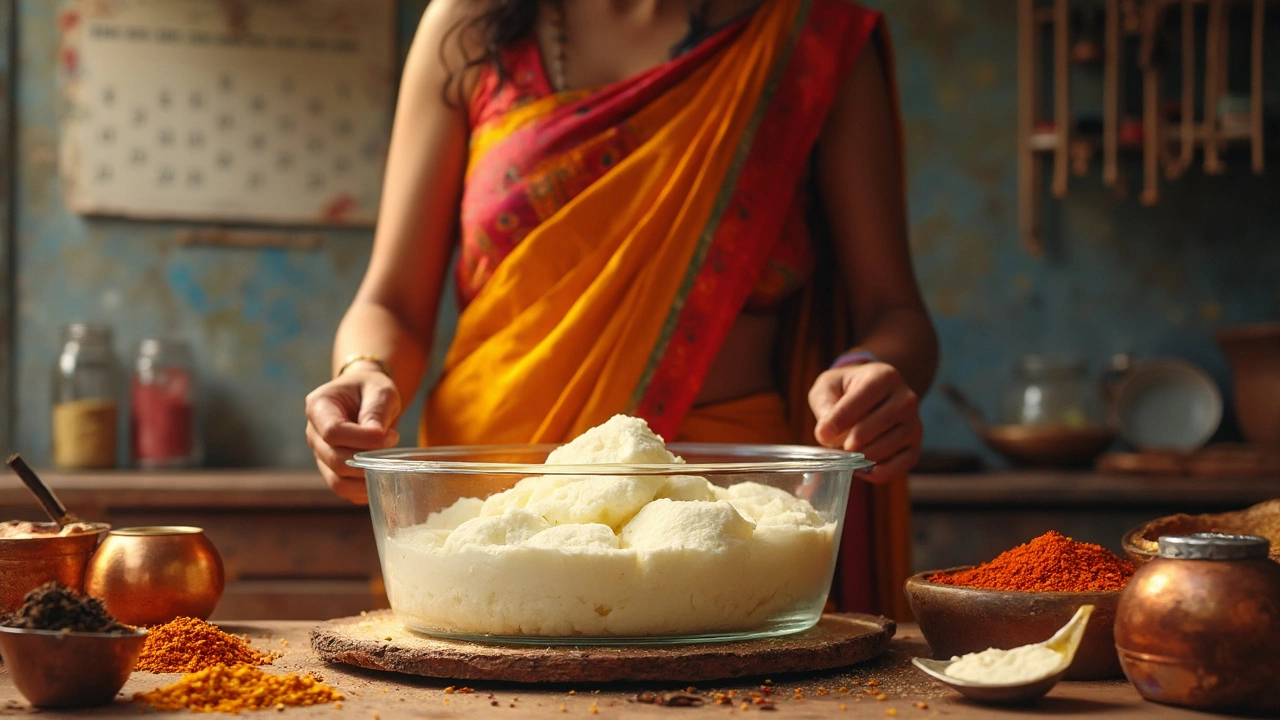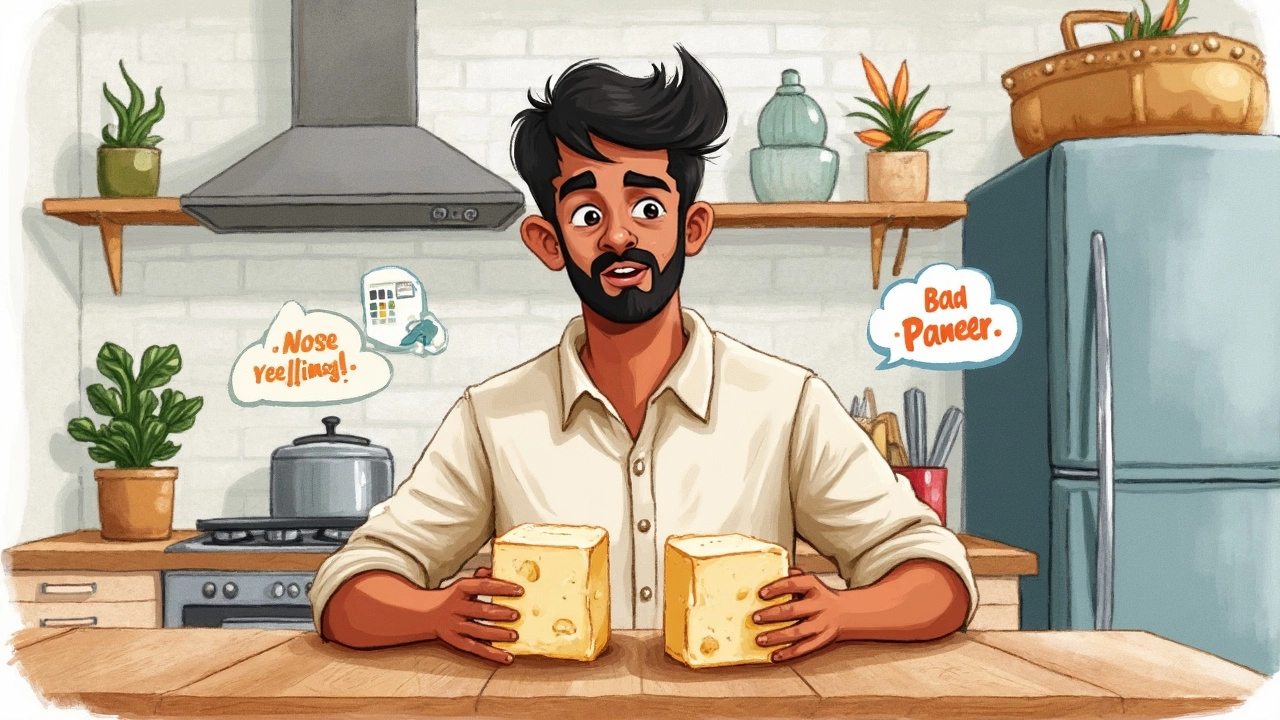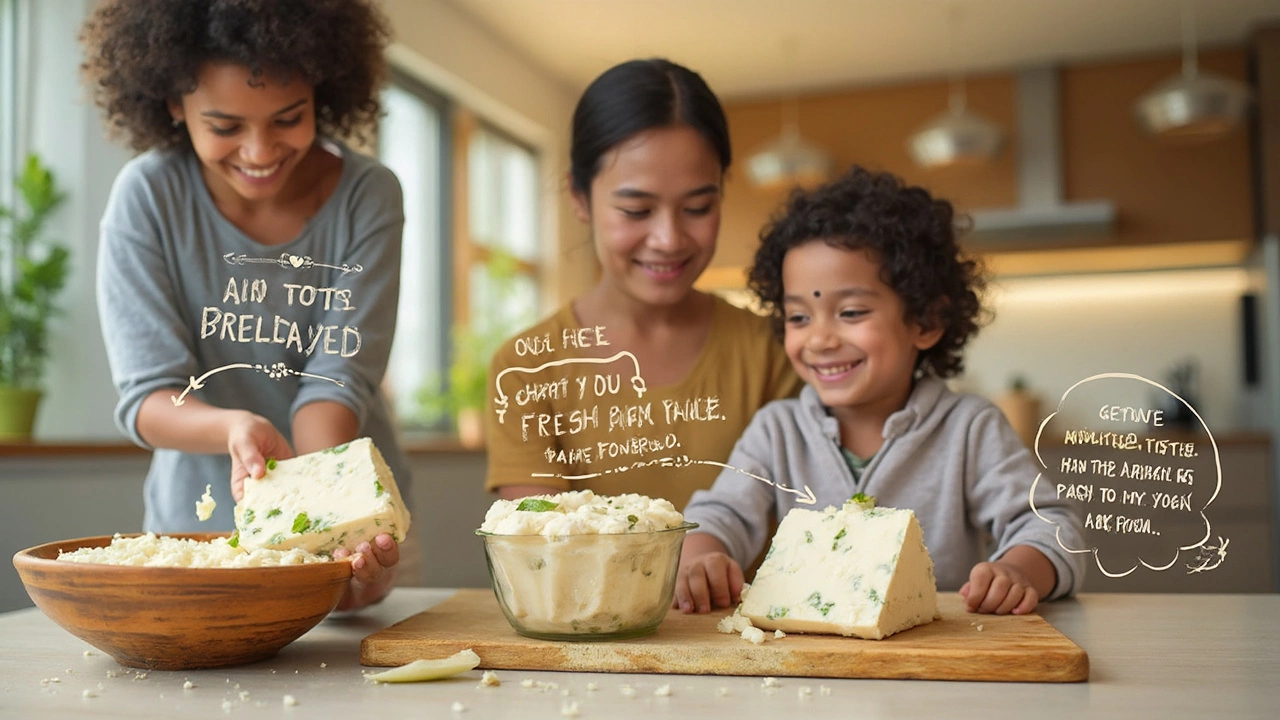Can I Eat 7 Days Old Paneer? Simple Facts You Need to Know
 Apr, 19 2025
Apr, 19 2025
If you’ve opened your fridge and found a block of homemade paneer from last week, you’re not alone. A lot of us make a batch, use some, and then forget about the rest until those leftovers stare us down. The big question: can you safely eat paneer that’s 7 days old?
Right off the bat, homemade paneer doesn’t last as long as the store-bought, vacuum-packed stuff. It usually goes bad much quicker because it skips the preservatives and fancy packaging. If you’re thinking, “Well, it looks and smells fine,” hang tight—looks can be deceiving. Spoiled paneer can blend in with the fresh stuff unless you know exactly what to look for.
The trick is knowing the real shelf life and paying close attention to warning signs. You don’t want to mess with spoiled dairy, trust me—it’s not worth a day of stomach trouble. Next, let’s run through how long you should actually keep homemade paneer, and how to spot a piece that’s better off in the compost bin.
- How Long Does Homemade Paneer Last?
- Signs Your Paneer Has Gone Bad
- Risks of Eating 7 Days Old Paneer
- Best Ways to Store Homemade Paneer
- How to Make Paneer Last Longer
How Long Does Homemade Paneer Last?
Here’s the straight answer: homemade paneer is best eaten fresh. In the fridge, it usually lasts about two to three days. After that, things get risky. By day four, the texture can turn grainy or slimy, and the sour smell usually tells you it’s game over. If you made your batch last Sunday and it’s Saturday now, you’re at the seven-day mark, which is really stretching it for homemade paneer safety.
Without preservatives, the only thing keeping your homemade paneer safe is the cold. Even then, bacteria like listeria and E. coli can start growing if the temperature’s not right or if the paneer picked up any germs along the way. Most food experts say to keep homemade paneer in an airtight container and make sure your fridge is actually set below 4°C (about 40°F). Got any doubts? Throw it out.
For a quick reference, here’s what you can expect:
| How it's stored | Homemade Paneer Shelf Life |
|---|---|
| Room temperature (above 20°C/68°F) | 6–8 hours max |
| Refrigerated (in airtight container) | 2–3 days |
| Frozen | 2–3 months |
So if you’re staring at 7 days old paneer, even if it looks fine, you’re already past the safe window for homemade stuff. Your best bet is the freezer if you need to keep it longer than a couple of days. If you want your paneer to last, act quick—store it away properly and don’t gamble with your gut.
Signs Your Paneer Has Gone Bad
When it comes to 7 days old paneer, don’t just trust your gut—use your senses. Paneer can turn on you fast, and knowing what to look for seriously helps you avoid a ruined meal (or worse, a ruined day).
Here are some real signs homemade paneer has gone off:
- Smell: This is your first warning. Fresh homemade paneer barely smells at all, maybe just a light milky odor. Bad paneer gets a sour, musty, or even slightly funky smell. If you open the box and flinch, toss it out.
- Texture: Good paneer is soft but firm. Old or spoiled paneer goes slimy, sticky, or crumbles weirdly. If it feels wet or gives off liquid, steer clear.
- Color: Fresh paneer is white or just off-white. If you see yellow spots, grey areas, or any green or blue fuzz, mold has moved in. Don’t even try to scrape off the bad parts—get rid of all of it.
- Taste: If you’ve already eaten a tiny bit and it tastes tangy, bitter, or just off, spit it out. Don’t try to salvage the rest. Safe paneer tastes mildly milky and neutral.
Here’s a quick look at how these signs line up, in case you want an at-a-glance check:
| Warning Sign | What It Means |
|---|---|
| Sour/musty smell | Panneer has started to spoil |
| Change in color | Possible mold or bacterial growth |
| Sticky/slimy texture | Bacterial action, unsafe to eat |
| Strange taste | Panneer is past its prime—don’t risk it |
If you spot even one of these, it’s not worth the risk. Trust your senses and err on the side of caution with eating old paneer. Next time, throw it in the freezer if you’re not eating it within a couple of days.

Risks of Eating 7 Days Old Paneer
Eating 7 days old paneer isn’t just about a slightly funky taste—there’s real risk involved. Homemade paneer, made without any preservatives, acts like a magnet for bacteria once it sits in the fridge for a few days. The longer it hangs around, the higher the chances for bad stuff to grow, even if you can’t see it.
The main culprits are bacteria like Staphylococcus, Salmonella, and Listeria. These can give you food poisoning and hit you with symptoms such as stomach cramps, vomiting, and diarrhea. People with weaker immune systems (like young kids, seniors, or pregnant women) are even more at risk.
"Dairy products, especially homemade items like paneer, can harbor dangerous bacteria if not used within a safe time frame," says Dr. Megha Doshi, a food safety expert at the National Dairy Board of India. "Eating paneer after a week in the fridge can expose you to foodborne illnesses."
How bad can it get? Here’s a quick list of what you might face:
- Stomach pain and nausea (sometimes just hours after eating)
- Diarrhea and vomiting
- Fever and chills
- Severe dehydration, especially if symptoms linger
You might think: maybe reheating will make old homemade paneer safe again. Sadly, that’s a gamble. Some toxins made by bacteria aren’t destroyed even if you cook the paneer afterward.
According to research from India's Central Food Technological Research Institute, fresh paneer kept at fridge temperature (4°C/39°F) should be used within 2–3 days for best safety. By day seven, bacteria can grow to unsafe levels.
| Storage Time | Fridge (≤4°C) |
|---|---|
| 1–3 days | Safe to eat |
| 4–6 days | Risk increases |
| 7+ days | Unsafe – high risk |
If you’re on the fence about eating week-old paneer, just don’t risk it. The taste isn’t worth a trip to the doctor—or a night stuck in the bathroom.
Best Ways to Store Homemade Paneer
If you want your homemade paneer to make it past a couple of days, you’ve got to store it right. It’s actually pretty easy, but one slip and your whole batch can go funky before you even get to enjoy it.
The big thing with 7 days old paneer is moisture. Too much water and it’ll get slimy, attract bacteria, and start to smell weird. Too little, and it gets dry, crumbly, and basically tastes like old chalk. Here’s what actually works for keeping it just right:
- Wrap it up: Take the paneer block and wrap it tightly in a clean, damp muslin cloth or paper towel. This protects it from drying out but doesn’t let it sit in water.
- Use an airtight box: After wrapping, tuck it into a clean, airtight container. This keeps out fridge smells and slows down the spoiling process.
- Change the cloth if needed: If you’re keeping it for a few days, check the cloth every other day. If it’s starting to dry out or smell, swap it for a new damp one.
- No freezing for fresh use: Freezing homemade paneer is only for emergencies. It’ll change the texture, make it chewy, and you’ll lose that fresh-milk softness.
- Keep it cold: Always store it in the coldest section of your fridge, not in the fridge door where temps go up and down.
If you’re a data nerd, here’s a quick table to break down how long homemade paneer stays good depending on how you store it:
| Storage Method | Shelf Life |
|---|---|
| At room temp | 6-8 hours |
| Fridge, well-wrapped | 3-4 days (sometimes up to 5) |
| Fridge, in water (change daily) | Up to 5-6 days |
| Freezer (airtight, single pieces) | Up to 2 months (texture changes) |
So if you made homemade paneer and want it to last close to a week, keep it wrapped tight, chill it, and don’t slack on changing the cloth or water. That’s really all it takes to keep your paneer fresh and safe for your next meal. Plus, it helps cut down on food waste, which is an underrated kitchen superpower.

How to Make Paneer Last Longer
Nobody likes tossing out spoiled homemade paneer. So, what can you actually do to keep it fresh for more days? It’s not rocket science, but a few small tricks make a big difference.
First thing: don’t just stick it anywhere in the fridge. Put your paneer in an airtight container—air is the enemy here because it dries the paneer out and lets bacteria in. If you don’t have fancy containers, wrap the block tightly in cling film and then put it in a basic box. Avoid storing paneer in the fridge door; it’s warmer there and can mess with freshness.
Speaking of freshness, always keep the paneer cold. Homemade paneer likes it around 2-5°C (basically the middle or bottom shelf). If possible, soak the paneer in water and change the water daily. This really keeps it soft and helps it last a couple more days.
- Homemade paneer lasts 2–3 days in the fridge in a container.
- If you keep it soaked in water (and swap the water every 24 hours), you might squeeze out up to 5 days.
- For longer storage, freeze small chunks—just know the texture will get a little crumbly after thawing.
- Never leave paneer at room temperature for more than an hour or two. Bacteria love warmth.
- Always use clean hands and utensils when handling, or you’re just speeding up spoilage.
Here’s a quick reference table for shelf life:
| Storage Method | Expected Shelf Life |
|---|---|
| Airtight in fridge | 2–3 days |
| Soaked in water (fridge) | 4–5 days |
| Freezer | 4–6 weeks (best texture within 2 weeks) |
A bonus tip: write the date on the container, so you’re not playing the guessing game later. These little moves can save your 7 days old paneer from ending up in the trash next time.
